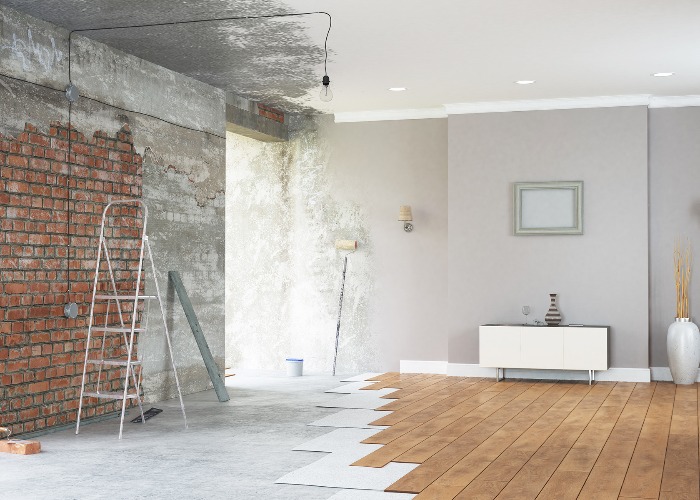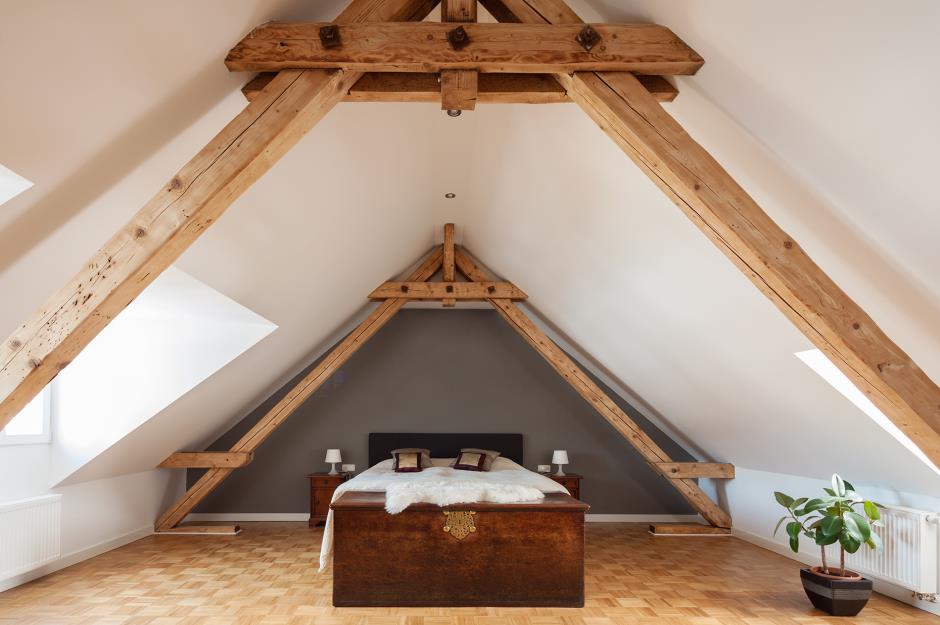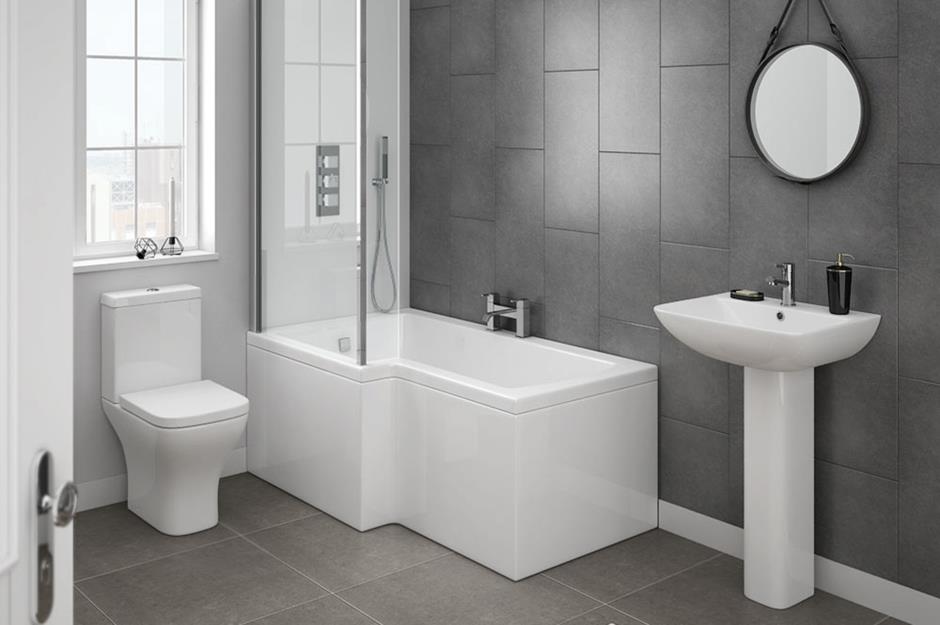Buy-to-let investment: Renovating for profit

Refurbishing a buy-to-let can be a great moneyspinner - or a minefield. Don't start until you read these top tips
It might sound simple enough: you buy a bargain run-down house, do it up, rent it out to impressed tenants who never want to leave and eventually sell it on for a hefty profit.
In reality, renovating a buy-to-let for profit can be a challenge, involving a lot of research, planning and decision-making that will make or break the success of your new business venture.
But this needn’t be a stressful ordeal by default. Or, at least, it needn’t be a stressful ordeal that results in such pitiful profit you wonder why you bothered.
Here are some handy tips for renovating your bricks and mortar for maximum financial return, both in terms of rental income and future sale:
Renovating for profit: Budget like your life depends on it
The biggest pitfall is getting so carried away with the project that you forget that the point is to make you money, not lose it! You will have researched the average rents for your area, so do not spend more on renovating and redecorating than you could ever make back.
Your tenants will be expecting to get what they pay for, so unless you are targeting the luxury market, rein your spending in and prioritise practicality. Know why you are making each change, and remember to keep receipts to file as expenses when you come to do your tax return.
Decide on a target market before you design the layout
For maximum yield, design the layout of your buy-to-let property with your prospective tenants in mind. Families, for example, will need large kitchens and living areas and may prefer two bathrooms to one bathroom and a small study or box room.
READ MORE: Your 12-point checklist for choosing a buy-to-let property
Students need to fit a lot into their bedrooms and in the most popular neighbourhoods, you may choose to convert a living room into another bedroom to boost income. Professional sharers, particularly couples, will want something bright, spacious and comfortable that represents a step-up.

Converting an attic space into an extra bedroom is costly but will increase rent and adds an average of 11% to your property's value
Space is king
The more space you can add to your home, the more desirable it will be to tenants and the more you can charge, plus it can boost the value of your home when you come to resell. Convert unused attic space into a master bedroom, expand a cramped kitchen into the garage, extend into the side return and consider adding a mezzanine level into a room with high ceilings.
Even modest extensions can add thousands of pounds to a property's value. Such improvements usually require planning permission, so allow time for the application process and consider employing an architect with knowledge of your local authority to help get plans through hassle-free.
Convert the property into an HMO
Houses in Multiple Occupations (properties rented by three or more tenants from different households, often students) can be lucrative as they allow you to collect more rent, but bear in mind that you will need to meet legal requirements, starting with securing an HMO licence.
Rules around fire safety are particularly strict: smoke alarms must be installed, electrical appliances must have safety certificates and you will need to send a gas safety certificate to the council every year. Converting a property into an HMO can be costly and time-consuming, so budget meticulously and think carefully about whether or not you can afford to wait for a return on your investment. New build houses are the fastest route in to the HMO rental market.
Durability is key
It might be tempting to go for the posh paint in the lovely new shade you can’t find in cheaper stores or that cream carpet that feels oh-so-soft underfoot. But remind yourself that you will not be living here: durability is imperative when it comes to profit and even the most respectful tenants may struggle to treat a rental property as if it is their own.
READ MORE: How to decorate a buy-to-let
It’s an unspoken rule that a degree of ‘wear and tear’ will be inevitable, meaning charging departing tenants for the inevitable grubby marks left on poorly-chosen interiors will likely end in a dispute. In any case, you don’t want to be spending money repainting and recarpeting every time your keys change hands. Go for darker flooring with a pattern or texture and scuff-resistant paint finishes that are usually used in hallways and children’s rooms, and keep any leftover paint for budget-friendly retouches.
Prioritise the communal areas
Tenants do care as much about the look, feel and functionality of the main living areas as they do their bedrooms. Prioritise the key shared areas, ensuring that the bathroom is clean and modern with good water pressure, the kitchen has contemporary fixtures and fittings and the living room is light and airy with enough space for everyone to relax in there together.
If redoing kitchens and bathrooms, keep the expenditure in proportion to the value of the property as a whole or you are unlikely to generate a profit. Ensuites are great, but tenants tend to prefer double bedrooms if given the choice. Do some research on other rentals in your area and market to see what other landlords are offering, and proceed only if you have the space and budget to do so. Installing an ensuite costs around £4,000.

While initially expensive, tiling a bathroom is the best approach for keeping costs down over a longer period. Stick to a neutral palette and larger scale tiles, which are cheaper and quicker to fit
Tile the bathroom and kitchen
Paint can be a nightmare to maintain in rooms exposed to moisture. Tiles look smart, are easy to clean and resist dreaded mould, which can be tricky and expensive to remove. Light grouting runs the risk of looking grimy quickly, so choose dark where possible. Fill in gaps around windows and fittings with anti-mould filler and cover up unsightly pipes with thick plywood or MDF boxing that can then also be tiled.
Small interior touches make a big difference…
Making a house a home needn’t cost a fortune. Warm lighting is a great way to make a room feel welcoming, while smartly-hung mirrors can add the illusion of space to poky hallways and reflect light around a dingy room. If you are partly furnishing the property for students, you can pick up quality beds, desks and tables from sites like Freecycle for free, or bid peanuts for them on eBay.
READ MORE: How to furnish a buy-to-let: 6 things you need to know
Families, however, will likely have their own furniture already and be looking for a blank canvas to move into. Keep decor neutral so that tenants can put their own touches on the space and not be put off by a taste that may not match their own.
…but do not ignore the exterior
Nobody wants to live in an ugly house, and attention to detail makes all the difference. If you have a front garden, keep it pretty and tidy. Consider painting the front door an on-trend colour, especially if appealing to students with an eye for what looks cute on Instagram. These small touches can add significant value to your property. It’s called 'curb appeal'.
Comments
Be the first to comment
Do you want to comment on this article? You need to be signed in for this feature